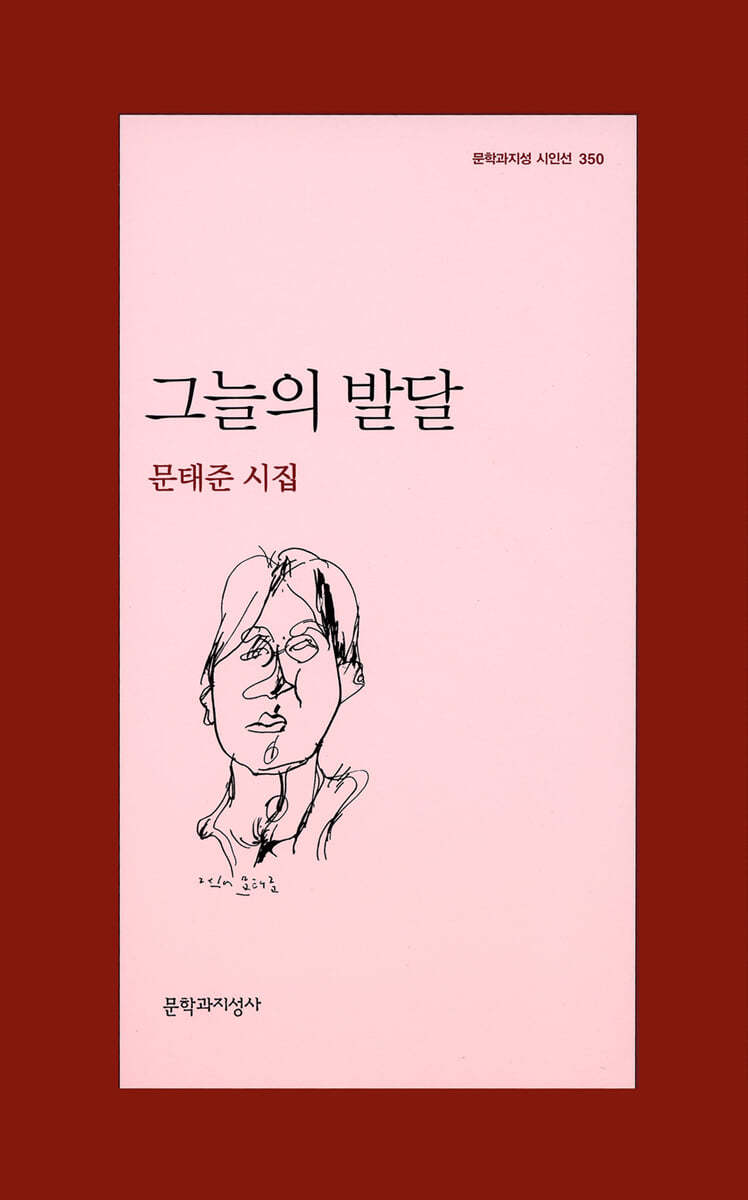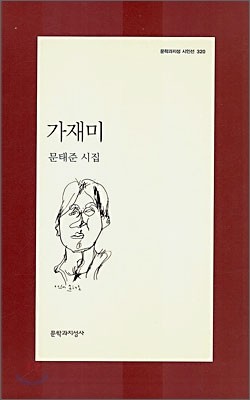Moon Taejun (born 1970) is a South Korean poet and program director.
Life
Moon Taejun was born in 1970 in Gimcheon, North Gyeongsang Province. His family were farmers who raised various crops and cattle, as well as keeping silkworms for extra cash. The family's fortunes improved when they began cultivating plums and grapes, crops for which Gimcheon is known. Moon's rural upbringing, dating back to his earliest memories, suffuses and is inseparable from his poetry.
An excellent student, Moon went on to attend Korea University, studying Korean literature. He earned his master's degree in creative writing and Ph.D in Korean literature from Dongguk University.
Moon made his literary debut in 1994, when nine of his poems including "Cheoseo" (처서 End of Summer) won the Munye Joongang New Writer's Contest. He is the recipient of the Dongsuh Literary Award, the Nojak Literary Prize, the Midang Literary Award, the Sowol Poetry Award, and the Mok-wol Literature Prize, among others. His poetry collection Geuneurui baldal (그늘의 발달 The Growth of a Shadow) has been published in English, and his poems "Eomeonineun chan yeomjureul dollimyeo" (어머니는 찬 염주를 돌리며 My Mother’s Prayer Beads) and "Meongot" (먼 곳 A Faraway Place) have appeared in the Guardian.
In addition to his writing, Moon is a program director at the Buddhist Broadcasting System (BBS). He is good friends with the novelists Kim Yeonsu and Kim Junghyuk, who are from the same hometown and with whom he attended school together.
Writing
Moon Taejun has published several poetry collections since his prize-winning debut in 1994, including Sureongeorineun dwiran (수런거리는 뒤란 Crowded Backyard), Maenbal (맨발 Barefoot), Gajaemi (가재미 Flatfish), The Growth of a Shadow, and Meongot (먼곳 A Faraway Place). As a leading poet who carries on the tradition of Korean traditional lyric poetry, his works have gained the attention of many literary artists and critics.
Moon's poems employ a comforting language to soothe the wounds of the soul. His poems seek to assuage the pains of those suffering from the violence and oppression of a heartless society. He values "conversation" highly, emphasizing full empathy between two existences, such as when he says, "That over there, is in me here; and I here, am in that over there. Let me respect that which is not me, and therefore those things that are me." The poet aspires to a state in which the subject and object are not distinct from one another, but fused together. In this respect, Moon Taejun carries on the traditional lyrical tradition.
Newly emerging poets too often look askance at the old lyricism, seeking instead new language suited to the tastes of the present age; but the result is often an idiosyncratic poetry that is difficult for the reader to understand. Moon’s poetry tacitly challenges this trend, and embodies hope for easy communication with the world through language steeped in lyricism. His poetry employs familiar subjects from the natural world such as flowers, trees, falling leaves and paths, and people from everyday life such as wife, child, and sufferer. But in the familiarity emerges the unique individuality of the poet, bringing to our awareness the fact that the familiar is not “old.”
Sus poemas emplean un lenguaje reconfortante que alivia las heridas del alma. Sus poemas buscan mitigar el dolor de aquellos que sufren la violencia y opresión de una sociedad inhumana. Tiene una gran consideración por la "conversación" y enfatiza una total empatía entre los seres , como cuando dice: "Ese de allí, soy yo aquí; y yo aquí, soy ese de allí. Permíteme respetar al que no es yo, y por tanto a las cosas que son yo". El poeta aspira a un estado en el que el sujeto y el objeto no sean distintos el uno del otro, sino que estén fusionados. A este respecto, Moon Taejun conserva la tradición lírica tradicional.3
Los nuevos poetas miran a menudo con demasiada desconfianza la lírica antigua, buscando un nuevo lenguaje que se adecue al presente; pero el resultado es a menudo una poesía ideosincrásica que es difícil de entender para el lector. La poesía de Moon Taejun desafía esta moda y personifica la esperanza por una comunicación sencilla con el mundo a través del lenguaje lírico. Su poesía usa sujetos familiares del mundo natural, como las flores, los árboles, las hojas caídas y los caminos, así como gente corriente de la vida diaria. De esta familiaridad emerge el individualismo único del poeta, haciéndonos saber que lo familiar no es "viejo". Algunos de sus poemas han sido traducidos al inglés en la publicación The American Reader.4
Ses poèmes utilisent un langage rassurant et apaisé pour panser les blessures de l'être. Ils cherchent à calmer les douleurs de ceux qui souffrent de la violence du quotidien et de l'oppression d'une société parfois impitoyable. Ils mettent en avant les vertus de la conversation, soulignant l'importance de l'empathie entre les personnes, comme dans cette formule : « Cette chose là-bas, elle est en moi, et moi qui suis ici, je suis dans cette chose là-bas. Permettez-moi de respecter aussi ce qui n'est pas moi, et donc de respecter les choses qui sont moi ». Le poète aspire à un état dans lequel le sujet et l'objet ne sont pas des réalités distinctes l'une de l'autre, mais sont des éléments fusionnés. À ce titre, le poète perpétue la tradition du lyrisme traditionnel3.
Les poètes qui émergent en Corée du Sud tiennent souvent un discours critique sur la poésie lyrique traditionnelle, cherchant plutôt de nouvelles formes de langage adaptées aux goûts de l'époque actuelle, mais le résultat est souvent une poésie très singulière, dfficile d'accès pour le lecteur. La poésie de Mun conteste tacitement cette tendance, et veut être un appel à une communication plus facile avec le monde à travers un langage empreint de lyrisme. Sa poésie traite de sujets familiers, notamment liés à la nature, comme les fleurs, les arbres, la chute des feuilles, les chemins etc. et il centre ses récits principalement sur les personnes ordinaires qui souffrent dans leur vie quotidienne. Dans cette familiarité des thèmes traités, le style et la personnalité du poète tendent pourtant à émerger et à se singulariser, ce qui peut nous faire penser que ces thèmes traditionnels ne sont pas forcément désuets même à l'heure actuelle. Une partie de son œuvre a été traduite aux États-Unis dans la revue The American Reader4.
Moon Taejun wurde 1970 in Kimch‘ŏn, Provinz Nord Kyŏngsang geboren. Er debütierte 1994 und veröffentlichte daher bist jetzt noch nicht allzu viele Werke. Sein großes schriftstellerisches Potential weckte jedoch bereits das Interesse vieler Schriftsteller und Kritiker.
Moons Gedichte sprechen eine besänftigende Sprache, die die Wunden der Seele heilt. Seine Werke versuchen die Schmerzen derer zu lindern, die unter Gewalt und Unterdrückung einer gefühlskalten Gesellschaft leiden. Besonders hoch schätzt er Unterhaltung und betont die komplette Empathie zwischen zwei Existenzen. Er strebt nach einem Zustand, in dem Subjekt und Objekt fusionieren und keinen Unterschied mehr aufweisen. In diesem Aspekt führt er die lyrische Tradition fort.
Neue Lyriker sind meist skeptisch der alten Lyrik gegenüber und suchen stattdessen eine neue Sprache, die der Gegenwart gerecht wird. Das Ergebnis ist jedoch nur allzu häufig eine eigenartige Lyrik, die dem Leser meist nur schwer verständlich ist. Moons Gedichte kontern stillschweigend diesen Trend und verkörpern die Hoffnung auf einfache Kommunikation in der Welt durch eine Sprache, die von Lyrik durchdrungen ist. In seinen Werken tauchen bekannte Subjekte der Natur auf wie z.B. Blumen, Bäume, Laub und Pfade und auch Menschen aus dem alltäglichen Leben wie z.B. Frauen, Kinder und Leidende. Aber gerade in dieser Vertrautheit liegt die einzigartige Individualität des Dichters, indem er uns die Tatsache ins Bewusstsein ruft, dass das Bekannte nicht immer „alt“ ist.[3]
文太俊の詩は、韓国の抒情詩の伝統的な系譜を継いでいるという評価を受けている。彼は、詩人の同僚から「今年の一番素晴らしい詩と詩人」として選ばれた。
彼は、個人がひそかに抱える傷を、温かい言葉で癒してくれる詩人である。激しい社会の暴力と抑圧のため、困窮に陥った人々に慰めの言葉を送る詩を発表している。
彼は何よりも対話を重要視している。存在と存在の間の十分な交流・交感を強調しており、主体と客体は分離されるのではなく一つになることを志向している。これらはやはり伝統的な抒情詩を継いでいるといえる。
문태준(1970~)은 대한민국의 시인이다.
생애
문태준은 1970년 경상북도 김천에서 태어났다. 고향에서 김천고등학교를 졸업했다. 1995년 고려대학교 국어국문학과를 졸업한 후, 동국대학교 대학원 국어국문학과에서 박사학위를 취득하였다.
1994년 《문예중앙》 신인문학상에 시〈處暑〉외 아홉 편이 당선되어 등단했다. 현재 '시힘' 동인으로 활동하고 있다. 시인은 2020년 도시를 떠나 제주로 거주지를 옮겨 그곳에서 귤나무를 키우고, 밭을 일구면서 시를 쓰고 있다.
작품 세계
문태준은 시인의 유년시절 그리고 고향, 자연에 대한 그리움과 삶과 죽음, 시간과 공간의 한계를 시인 특유의 섬세한 언어로 그려내고 있다. 특히 시인은 모든 경계들 틈에서 가까스로 존재하는 생명들에게 공감과 연대가 필요하다는 것을 작품을 통해 꾸준히 발언하고 있다.
시집 《수런거리는 뒤란》(2000)은 1994년 등단한 시인의 첫 시집이다. 시집에 수록된 작품들은 시인이 태어나 자란 고향인 추풍령 근처의 작은 마을에 사는 40여 가구를 배경으로 고향에 대한 그리움을 작품으로 그려내었다.
《가재미》(2006)는 대중들에게 가장 널리 알려진 시집이다. 작가는 이 시집에 수록된 〈누가 울고 간다〉로 2005년 제5회 미당문학상을 받았고, 〈그맘때에는〉으로 2006년 제21회 소월시문학상을 받았다. 표제작 〈가재미〉를 비롯해 모두 68편의 시가 수록되어 있다. 시인의 유년 시절, 고향 마을, 뜰, 허공, 오래된 숲과 계절, 삶과 죽음의 경계에 놓여 있는 힘없는 존재들이 작품마다 저마다의 목소리를 내고 있다.
《우리들의 마지막 얼굴》(2015)에서 시인은 세계를 우회하지 않지만 절제하는 목소리로 현실 의 고단한 삶 그리고 죽음과 이별에 대해서 담백한 언어로 말하고 있다.
《아침은 생각한다》(2022)는 자연과 인간이 공존하는 세계의 풍경을 시인의 섬세한 언어로 그려내었다. 자연과 더불어 자란 시인의 유년의 체험이 고스란히 녹아 있는 이번 시집에는 상상력을 통해 자연과 동화되는 모습이 절정을 이룬다. 시인은 세상의 모든 존재들에게 공감과 연대가 필요하다는 것을 시적대상으로서의 자연물을 통해 보여주고 있다.
주요 작품
1) 시집
《수런거리는 뒤란》, 창비, 2000.
《맨발》, 창비, 2004.
《가재미》, 문학과지성사, 2006.
《그늘의 발달》, 문학과지성사, 2008.
《먼 곳》, 창비, 2012.
《우리들의 마지막 얼굴》, 창비, 2015.
《내가 사모하는 일에 무슨 끝이 있나요》, 문학동네, 2018.
《아침은 생각한다》, 창비, 2022.
2) 산문집
《느림보 마음》, 마음의숲, 2009(개정판, 2018).
《나는 첫 문장을 기다렸다》, 마음의숲, 2022.
5. 수상 내역
2004년 동서문학상
2004년 노작문학상
2004년 유심작품상
2005년 제5회 미당문학상
2006년 제21회 소월시문학상
2014년 서정시학작품상
2018년 목월문학상





